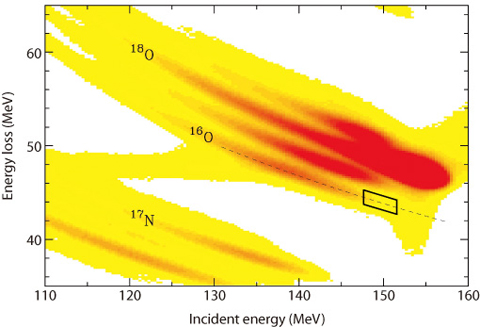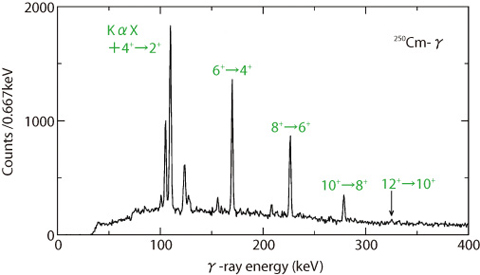
Fig.6-2 Distribution of scattered particles

Fig.6-3 Energy spectrum of γ-rays in 250Cm
Nuclei used for atomic energy, such as uranium and plutonium, are known to be spheroidal in shape. A shell structure emerges in such deformed nuclei as well as in spherical nuclei. Which nucleus has a closed shell? This is one of the most important issues in nuclear physics, a quantum many-body problem involving protons and neutrons.
The nuclear structure of neutron-rich transuranium nuclei has not been studied because of experimental difficulties. We have studied the neutron-rich nucleus curium-250 (250Cm) produced by the two-neutron transfer reaction with an oxygen-18 (18O) beam and a 248Cm target using the tandem accelerator. Deformed states in 250Cm were revealed by measuring the prompt γ-rays emitted at the reaction.
It is essential to distinguish γ-rays from 250Cm from those of an enormous amount of other reaction products. We have, therefore, developed a high-resolution transmission- type Si detector (ΔE) to distinguish reaction products; energy loss in the Si ΔE detector is proportional to mass number and squared atomic number and inversely proportional to kinetic energy of the incoming particle. As shown in Fig.6-2, scattered particles are clearly separated by mass and atomic number. When the 16O particle is emitted, the residual nucleus of 250Cm is produced. Fig.6-3 shows the γ-ray spectrum at the same time as the 16O particle emission in the enclosed area indicated in Fig.6-2, where the excitation energy of 250Cm is below the neutron separation energy. This spectrum shows a typical rotational band up to 12+, with almost the same energy differences between neighboring γ-rays. The 250Cm nucleus has the largest neutron number among nuclei whose high-spin states were observed.
The moment of inertia of a rotational band, derived from the excitation energies, gives information about a closed shell. On the surface of deformed nuclei, superfluid states, which do not contribute to the moment of inertia, are formed owing to the parings of nucleons. In the deformed nucleus with a closed shell, the pairing strength is weakened, and thus, the moment of inertia becomes larger. The moment of inertia for 250Cm154 was found to be significantly smaller than that of 248Cm152. This indicates that Cm nucleus has a closed shell where N=152. We will further study the dependence of this closed shell on atomic number and elucidate the mechanism of evolution of the shell structure.